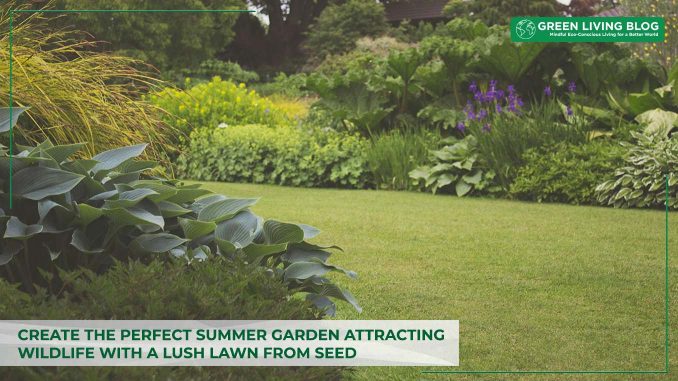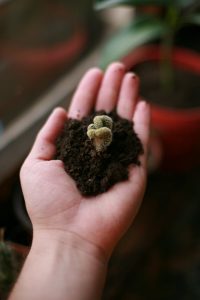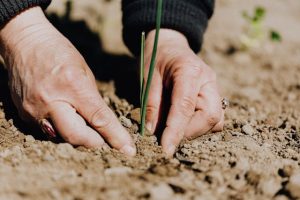
It’s time to prepare your garden for a season of vibrant colours, lush foliage, and the soothing green carpet that is a well-maintained lawn.
While many opt for turf, growing a lawn from seed presents numerous advantages, including cost-effectiveness, a diverse selection of seed mixes to match specific conditions and attract more wildlife, and the convenience of transportation.
In this comprehensive guide, we’ll explore the steps to get your garden ready for the summer, focusing on the joy and benefits of cultivating a beautiful lawn from seed that will not only benefit you but also your environment.
Step 1:

It’s essential to prepare the ground adequately. Start by removing any waste and debris on the designated area, removing any obstacles that might hinder the growth of your future lawn.
Clean the area as much as possible, before continuing to the next step. Make sure you have the right garden clearance company to help you if you can’t manage by yourself.
Step 2:
Firming the soil is a crucial step in establishing a stable foundation for your seeds. Tread the area several times, employing small, shuffling steps in different directions. This process helps eliminate air pockets and compacts the soil, promoting better seed-to-soil contact.
Following this, use a rake to thoroughly smooth the surface in various directions. This not only levels the ground but also aids in breaking up any clumps of earth and creating a fine, crumb-textured seedbed – an ideal environment for seed germination.
Step 3:
It’s important to pay attention to the temperature conditions when seeding a lawn. Optimum temperature for seed germination varies depending on the type of grass you’re planting. The ideal temperature range for grass seed is between 55-85°F (12-29°C).
Anything below 55°F (13°C) will inhibit the growth of your grass seeds, so it’s important to keep an eye on the weather forecast when planting. Monitoring and maintaining these temperature ranges during the seeding process contribute significantly to the success of your lawn establishment.
Assessing Your Lawn’s Needs

Before embarking on the journey of growing a lawn from seed, it’s crucial to assess the specific needs of your garden as a key gardener skill. Consider factors such as soil type, sunlight exposure, and climate to determine the most suitable seed mix for your location. Whether your garden is shaded or sun-drenched, clayey, or sandy, there’s a seed mix tailored to thrive in those conditions.
Choosing the Right Seed Mix
One of the key advantages of growing a lawn from seed is the diverse range of seed mixes available. Selecting the right mix ensures that your lawn not only survives but thrives in its environment. Some blends are designed for high-traffic areas, while others prefer shade tolerance. Take time to research and choose a mix that aligns with your garden’s unique characteristics.
Soil Preparation
Preparing the soil is a crucial step in creating a strong foundation for your lawn to flourish. Start by removing any debris, rocks, or weeds. Loosen the soil with a rake or garden fork to improve aeration and drainage. Consider adding organic matter, such as compost, to enhance soil fertility. This step is essential for optimal seed germination and root development.
Seeding Techniques
When it comes to seeding, there are various techniques to ensure even coverage and successful germination. Broadcasting, over-seeding, or using a seed spreader are common methods. Pay attention to seed depth and spacing recommendations on the seed packaging. Water the area lightly after seeding to promote soil contact and kick-start the germination process.
Watering and Maintenance

Consistent watering is crucial for the establishment of a healthy lawn. Keep the seeded area consistently moist but be cautious not to flood the soil. As the seedlings emerge, gradually reduce watering frequency but increase the amount of water applied to encourage deep root growth. Regular mowing, once the grass reaches the recommended height, promotes a dense and resilient lawn.
Introducing New Plants for Diversity
While focusing on the grass, don’t forget to introduce new plants to add diversity and visual interest to your garden. Consider incorporating flowering plants, shrubs, or even a small vegetable patch to create a harmonious and balanced outdoor space. Native plants are excellent choices, as they often require less maintenance and contribute to local biodiversity.
Fertilising for Nutrient Boost
To ensure your lawn remains lush and vibrant throughout the summer, consider a well-timed fertiliser application. Choose a balanced, slow-release fertiliser that provides essential nutrients without promoting excessive growth. Be mindful of application rates, as over-fertilising can lead to negative effects on both the lawn and the environment.
Closing Thoughts
Growing a lawn from seed is a rewarding endeavour that not only saves costs but also allows for customisation and adaptation to specific garden conditions. As you embark on this journey to prepare your garden for the summer, consider the unique benefits of cultivating a vibrant, seed-grown lawn. From selecting the right seed mix to introducing new plants for diversity, each step contributes to the creation of a lush and inviting outdoor space for the warm months ahead. So, roll up your sleeves, embrace the joy of gardening, and watch your seedlings transform into a beautiful, thriving lawn that will be the envy of the neighbourhood.
![]()
Author Profile

- Eco Warrior by day, Eco Blogger by night trying to get the eco balance right.
Latest entries
 Green LivingJune 30, 2025Herbal Tea for Insomnia: Your Guide to Natural, Sustainable Sleep Solutions
Green LivingJune 30, 2025Herbal Tea for Insomnia: Your Guide to Natural, Sustainable Sleep Solutions EnvironmentJune 24, 2025What are the most energy-efficient Home Upgrades in 2025?
EnvironmentJune 24, 2025What are the most energy-efficient Home Upgrades in 2025? EnvironmentJune 23, 2025Eco-Friendly Paper Straws: A Small Switch That Speaks Volumes for your Brand
EnvironmentJune 23, 2025Eco-Friendly Paper Straws: A Small Switch That Speaks Volumes for your Brand Green Expert GuidesJune 9, 2025How does Wind Turbine Component Replacement work?
Green Expert GuidesJune 9, 2025How does Wind Turbine Component Replacement work?





Leave a Reply
You must be logged in to post a comment.